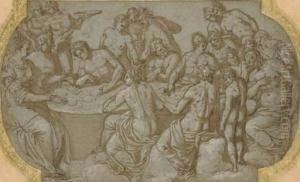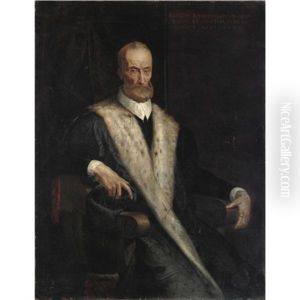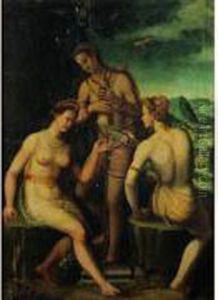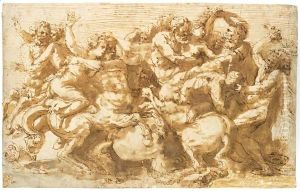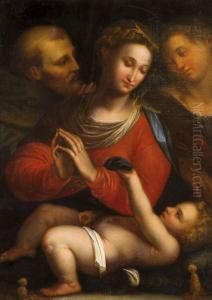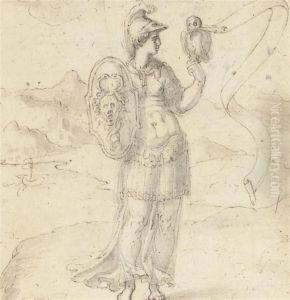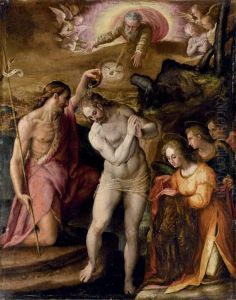Prospero Fontana Paintings
Prospero Fontana was an Italian painter of the late Renaissance period, born in 1512 in Bologna, Italy. He was a prominent figure in the Bolognese School of painting, which played a significant role in shaping the artistic landscape of the time. Fontana was initially trained by his father, a painter named Antonio Fontana, and later studied under prominent artists such as Innocenzo da Imola and Perin del Vaga.
Prospero Fontana’s work is characterized by its elegant figures and elaborate compositions, often imbued with a sense of grace and clarity. He is known for his religious and mythological scenes, which showcased his ability to blend classical themes with the emerging Mannerist style. The Mannerist movement, which followed the High Renaissance, was known for its artificiality and emphasis on style over substance, and Fontana's work often reflected these ideals.
Throughout his career, Fontana received numerous commissions from churches and noble patrons, which allowed him to create large-scale frescoes and altarpieces. One of his most notable works is the 'Assumption of the Virgin' fresco in the Cathedral of San Pietro in Bologna. In addition to his religious works, Fontana also painted portraits and contributed to the decoration of palaces.
Prospero Fontana was also a teacher, and his most famous student was his own daughter, Lavinia Fontana, who became one of the few female artists of the time to achieve significant recognition. Lavinia was known for her portraits and historical scenes and carried on the artistic legacy of her father.
Fontana's contributions to the Bolognese School and the Italian Renaissance are significant, and his works can be found in various museums and collections around the world. He died in 1597 in Bologna, leaving behind a body of work that continues to be studied and admired for its technical mastery and artistic beauty.


